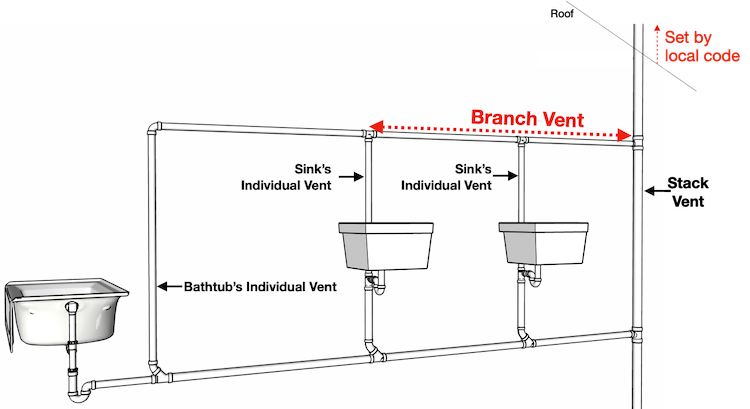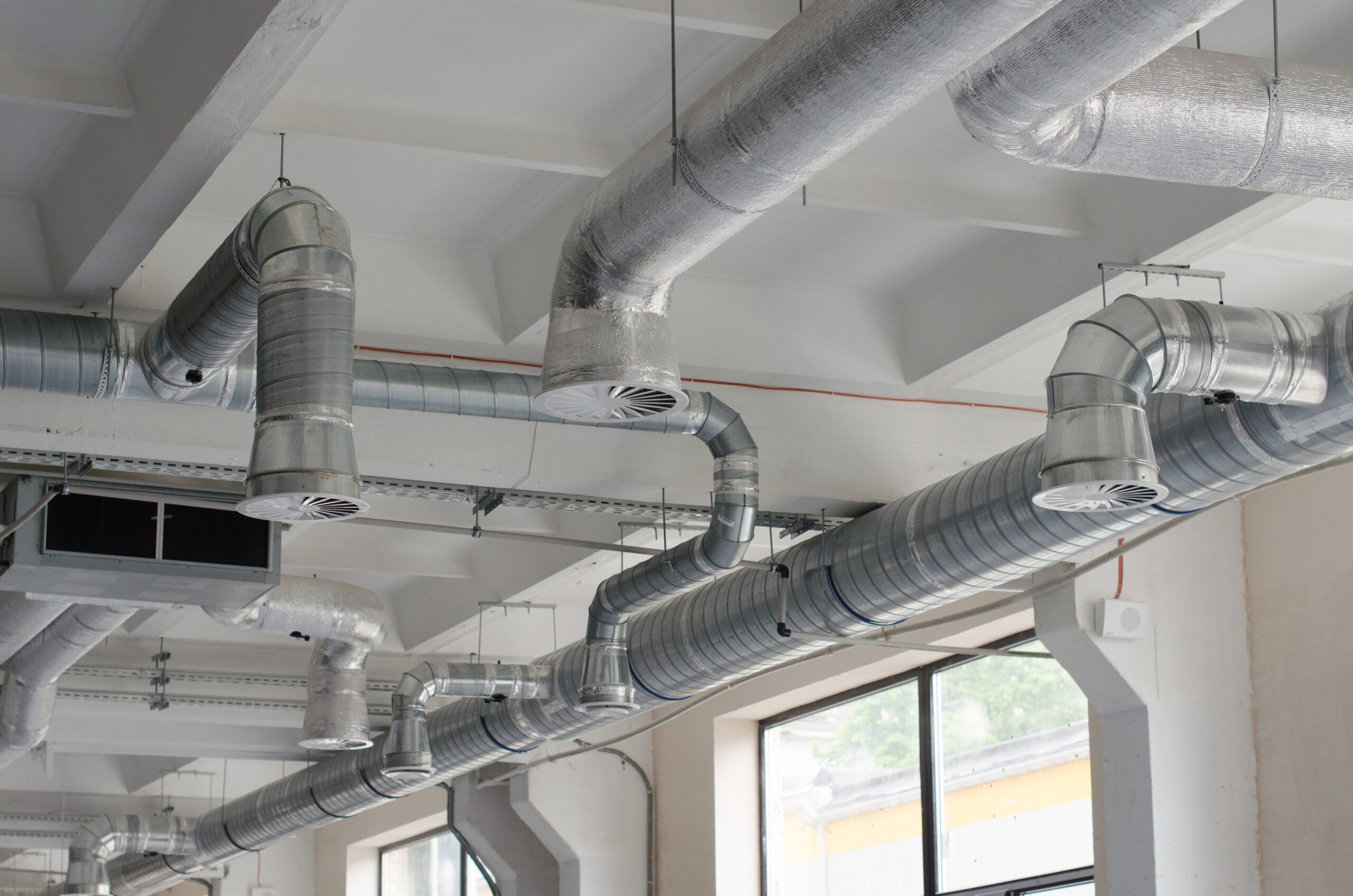The Advantages of Adequate Ventilation in Your Plumbing System
The Advantages of Adequate Ventilation in Your Plumbing System
Blog Article
What are your opinions on What Is a Plumbing Vent and Why Is It Important?

Proper ventilation in pipes systems is typically ignored, yet it is important for maintaining the capability and safety and security of your home's plumbing. Ventilation aids control air pressure, stop the build-up of harmful gases, and ensure the effective elimination of waste. In this guide, we will explore the significance of proper pipes ventilation, just how it works, and the advantages it offers your pipes system.
Recognizing Air Flow in Pipes
Ventilation in pipes describes the network of pipelines that permit air to flow with the drainage system. These vents serve multiple objectives, consisting of controling air pressure within the pipes, stopping drain gases from getting in the home, and assisting in the smooth circulation of wastewater.
Just How Air Flow Works in Pipes Solutions
Air Pressure Guideline
Correct air flow preserves balanced atmospheric pressure within the pipes system. When water moves via pipelines, it displaces air. Without ample air flow, this displacement can develop unfavorable stress, resulting in slow down drains pipes or siphoning of water from traps, which can create unpleasant odors to seep into the home.
Protecting Against Sewage System Gas Accumulation
One of one of the most critical features of plumbing vents is to avoid sewage system gases, such as methane and hydrogen sulfide, from building up within the home. These gases can present severe health and wellness dangers and are extremely flammable. Vent pipes enable these gases to escape safely outdoors.
Assisting in Waste Removal
Air flow assists in the effective removal of wastewater by avoiding airlocks in the drainage system. When air can stream easily via the vents, it allows water and waste to flow smoothly through the pipelines, minimizing the threat of obstructions and back-ups.
Kinds Of Pipes Vents
Key Heap Vent
The main pile air vent, likewise referred to as the air vent stack, is the key vent in a pipes system. It extends from the primary drain line up with the roof, enabling gases to leave and fresh air to enter the system.
Branch Vent
Branch vents link to the primary stack air vent and offer individual components, such as sinks, bathrooms, and showers. These vents guarantee that each fixture has sufficient air flow to work appropriately.
Air Admittance Valve (AAV).
An Air Admittance Shutoff (AAV) is a one-way valve that enables air to get in the plumbing system without the requirement for a typical vent pipe extending via the roofing system. AAVs are frequently made use of in renovations or locations where setting up a conventional vent is not practical.
Indications of Poor Ventilation in Plumbing.
Slow Draining Fixtures.
If your sinks, bathtubs, or bathrooms are draining slowly, maybe a sign of bad air flow. Poor air flow can develop a vacuum cleaner effect, making it tough for water to drain effectively.
Gurgling Sounds.
Gurgling audios coming from drains pipes are typically an outcome of air being drawn through water traps due to unfavorable stress in the pipelines. This is a clear indication of insufficient air flow.
Unpleasant Odors.
Sewer smells inside your home are a red flag that your plumbing system is not properly aerated. This could mean that drain gases are not being adequately vented outside, resulting in potentially dangerous problems.
Typical Air Flow Errors.
Insufficient Vent Sizing.
Using undersized air vent pipes can cause poor air circulation and stress inequalities in the system. It's vital to make use of vents that satisfy the particular requirements of your plumbing system.
Improper Vent Placement.
Positioning vents also much from the fixtures they offer can lower their performance. Correct placement guarantees that air can stream openly and efficiently through the system.
Disregarding Code Demands.
Building codes give details guidelines for plumbing air flow. Neglecting these codes can cause a system that falls short to operate correctly and may cause costly repairs or health hazards.
Advantages of Proper Air Flow.
Enhanced System Effectiveness.
Appropriately aerated plumbing systems run more efficiently, with fewer clogs, faster draining, and less pressure on the pipelines. This efficiency extends the lifespan of the pipes system.
Improved Air High Quality.
By avoiding drain gases from entering your home, correct ventilation adds to far better indoor air high quality, making your living environment healthier and more comfortable.
Protecting Against Water Damage.
Sufficient air flow aids stop water from being siphoned out of catches, which can lead to drain gases going into the home and creating water damage gradually.
Steps to Make Certain Correct Air Flow.
Consulting Pipes Codes.
Constantly seek advice from local pipes codes when creating or modifying your pipes system. These codes give the required guidelines for appropriate venting and ensure your system meets safety standards.
Routine Evaluation and Maintenance.
Routine examinations can help determine possible ventilation issues before they come to be significant troubles. Upkeep tasks, such as cleansing air vent pipelines and checking for blockages, are important for maintaining the system in good working order.
Specialist Installment.
For new installations or significant adjustments, it's smart to hire an expert plumbing. They have the proficiency to ensure the ventilation system is appropriately developed and installed according to code.
Verdict.
Proper ventilation is an essential element of any kind of plumbing system, making certain that it works effectively and securely. By recognizing the significance of ventilation, acknowledging the signs of inadequate ventilation, and taking actions to preserve your system, you can avoid costly problems and safeguard your home's air high quality.
4 Things You Should Know About Your Plumbing Vents
What Plumbing Vents Are
Also called a vent stack, a plumbing vent is a vertical pipe attached to your drain line that runs through your roof. The plumbing vent pipe, or plumbing air vent, removes gas and odors from your plumbing system and allows fresh air to enter the pipes, helping the water to flow out of the drain pipes.
What Plumbing Vents Do
Plumbing vents have two basic functions. One of which is to allow unpleasant smelling wastewater and sewer gasses to escape your plumbing system instead of entering your home. Plumbing vent pipes are typically located on roofs, away from windows, to ensure the fumes exit the home completely.
The other function of the plumbing vent is to move fresh air into your plumbing system. This helps move water through every plumbing fixture in your house, like toilets and sink drains. Think of the way in which you need to let a little air into the bottle as you pour soda in order to make the drink flow smoothly.
Different Types of Plumbing Vents
True vent: This is the most common vent option. In simplest terms, a true vent is a vertical pipe attached to your drain line that exits through the roof. They often function as the main vent that other fixtures can connect to. Re-vent pipe or auxiliary vent: Attached to the drain line near specific plumbing fixtures, re-vent pipes run up and over to connect to the main vent. Common vent: Two plumbing fixtures installed on opposite sides of a wall are typically tied into the vent stack using something known as a sanitary cross. Wet vent: This venting option operates as a drain pipe and a vent at the same time. Wet vent drainage systems drain water from one fixture while venting the air from another. Although they’ve been used for over 100 years, wet vent systems have only recently been added to the plumbing code in many areas. If you’re planning on installing one in a bathroom remodel, make sure you check your local code prior to construction. Loop vent: For free-standing fixtures like kitchen island sinks, loop vents are ideal. These vent pipes run under the floor, rise from the P-trap, and create a loop inside the cabinet sink. Air admittance valve: An AAV is a one-way mechanical valve typically installed at the site of the plumbing fixture. AAVs allow venting to occur without having to tie into a larger venting system. They’re ideal for venting fixtures where you aren’t able to easily connect to an existing vent system. Common Plumbing Vent Issues
Although vent pipes typically don’t have water flowing through them, they’re still subject to many typical plumbing issues. For example, clogs are one of the most common problems associated with sewer vent pipes. If your vent pipe gets clogged, all of your plumbing fixtures tied into the vent stack will be affected.
A sink with a slow drain that bubbles and gurgles or a strong sewage smell around your toilet are both indicators that your toilet vent pipe is clogged. Because most vent pipes exit through the roof, old leaves, twigs or even a bird’s nest could be clogging the pipe.
Clogs in your vent pipe system cause a buildup of negative pressure, meaning that water won’t be able to flow out of your home very well. It’s similar to putting your finger over the opening of a straw to trap water inside. When you remove your finger, the water is able to flow out of the straw.
If you suspect you have any blockage in your vent, make sure you have a professional come examine the situation. Left unchecked, a blocked air vent can lead to other costly repairs, like leaks and sediment buildup.
Under Pressure
Pipe vents are essential aspects of a home’s plumbing system. Owning a home means learning about all sorts of things you never put much thought into before. But by understanding as much as you can about the important systems of your home, you can keep those budgets intact and those anxiety levels low.
https://www.homeserve.com/en-us/blog/home-improvement/plumbing-vents/

I'm very eager about What Is A Plumbing Vent & How Do They Work? and I'm hoping you appreciated the blog posting. Sharing is caring. Helping others is fun. I cherish your readership.
Detail Report this page